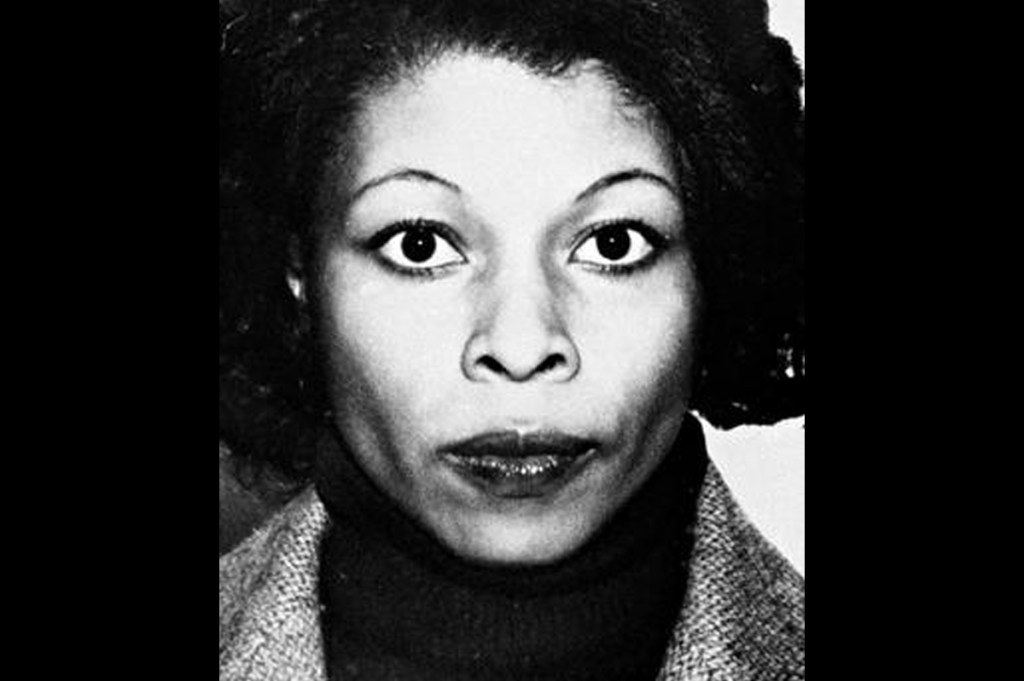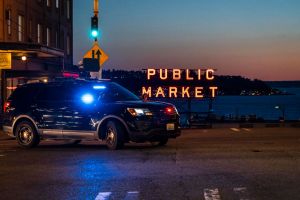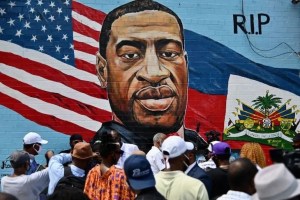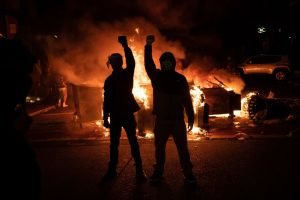In the early hours of May 2, 1973, State Trooper James Harper pulled over a white 1965 Pontiac Lemans on the New Jersey Turnpike near New Brunswick. Inside were three revolutionary desperados: Zayd Malik Shakur, Sundiata Acoli and JoAnne Chesimard. Trooper Werner Foerster, who was patrolling nearby, pulled up behind Officer Harper. Harper approached the Pontiac and asked the driver for his license and car registration. Something didn’t seem right with the paperwork, and the driver and two passengers were asked to step out of the car. Then gunfire erupted.
Officer Harper and JoAnne Chesimard were wounded, Zayd Malik Shakur was shot dead and Sundiata Acoli escaped on foot. Officer Foerster, shot in the back and killed with his own service revolver, left behind a wife and a three-year-old son. Acoli and Chesimard received life sentences for murder, with an additional 26 to 33 years for good measure.
Nearly four decades later, Chesimard, now better known as Assata Shakur, is back in the news. She is a political inspiration and symbol of resistance for many protestors who have taken streets in dozens of American cities in the aftermath of the May 25, 2020 police killing of George Floyd. From Providence, Rhode Island to Oakland, California, demonstrators have evoked the words of Shakur in what has become known as the ‘Assata chant’: ‘It is our duty to fight for our freedom. It is our duty to win. We must love each other and respect each other. We have nothing to lose but our chains.’
Shakur has become a latter-day Che Guevara, a political totem who seems to embody the struggle against racism and oppression. Like Guevara, her image adorns a variety of swag, including a $30 ‘Assata Shakur is Welcome Here’ tote bag. And like Guevara, a Marxist-Leninist Moloch who enthusiastically ordered up the firing squads to wipe out revolutionary Cuba’s perceived enemies, Shakur’s place on the wildest shores of far-left politics in the 1960s and 1970s has largely been forgotten — or never remembered.
Assata’s involvement in the shootout on the Jersey Turnpike was the zenith of her career as a violent extremist. Earlier, she had been leader of the New York chapter of the Black Panther Party for Self-Defense, and when the party split, she joined a faction led by Panther luminary and Soul on Ice author Eldridge Cleaver. (He would go on to become a disciple of the Revd Sun Myung Moon, a Mormon, a crack addict, a designer of codpiece-fronted men’s trousers and, perhaps most improbably, a Republican.)
The Cleaver faction formed the nucleus of the Black Liberation Army (BLA), a shadowy nationwide network of violent radicals. By 1971, according to BLA member Jalil Muntaqim, this shadowy guerrilla apparatus was ‘becoming rich in experience in the tactics of armed expropriations, sabotage, and ambush-assaults’.
In its violent debut, BLA shooters machine-gunned and wounded New York policemen Thomas Curry and Nicholas Binetti, who were guarding the apartment house of New York’s district attorney. The DA had unsuccessfully prosecuted the ‘Panther 21’, who had been accused of plotting to bomb police stations and other targets. (The Panther 21 trial was a riotous eight-month affair. Adding to the spectacle was the striking courtroom appearance of one of the defendants, tricked out in what a reporter described as a ‘fly-blue leatherette jacket with matching Lenin cap’ topped off with a ‘Metternich overcoat’.)
The BLA’s police assassination campaign picked up steam, On May 21, 1971, BLA members ambushed and murdered two New York police officers, Waverly Jones and Joseph Piagentini, at an Upper Manhattan housing project. The gunmen took their time with Piagenti. Using multiple handguns, they slowly fired 22 rounds into his body as he begged for his life. On August 27 in San Francisco, a nine-man BLA team assaulted the Ingleside police station and killed Sergeant John Young with a shotgun blast to his chest. The following January in New York, the BLA’s George Jackson Squad took credit for the murder of officers George Foster and Rocco Laurie outside a Lower East Side restaurant.
[special_offer]
On January 28, 1973, patrolmen Michael O’Reilly and Roy R. Pollina were shot and wounded while they were stopped at a traffic light in St Albans, Queens. Shakur and other BLA members were indicted for the attempted murder, a charge later dismissed for insufficient evidence. But there is no doubt that Shakur was a key part of what one former prosecutor called the BLA’s ‘coast-to-coast cop killing conspiracy’. A deputy New York police commissioner accurately characterized Shakur as the ‘soul of the gang, the mother hen who kept them together, kept them moving, kept them shooting’. Indeed, she would later earn the dubious honor of being the first woman to make the FBI’s list of 10 most-wanted terrorists.
Shakur’s place in the BLA pantheon largely explains the effort by a group of violent extremists to help her escape from the Clinton Correctional Facility in New Jersey, where she was serving her sentence. On November 2, 1979, after months of meticulous surveillance and planning, BLA veterans and members of the May 19th Communist Organization (a women-led successor to the Weather Underground Organization) kidnapped two guards at gunpoint and got Shakur into the trunk of a getaway car. Spirited to safe houses in New Jersey, Pittsburgh and the Bahamas, by 1984 she had made her way to Cuba, where the Castro regime granted her political asylum. Today, she remains a guest of the Cuban government, but has kept a low profile — perhaps because US authorities are offering a total of $2 million in reward money for her apprehension.
Here is some unsolicited advice for today’s firebrands: go ahead and pull down monuments to traitors to the Union like Confederate president Jefferson Davis (who at the end of the war allegedly tried to shake off his Federal pursuers by donning a women’s dress); slave trader and Ku Klux Klan founder Nathan Bedford Forrest; and saintly Robert E. Lee, a commissioned US Army officer at the time of his defection to the rebel cause. By all means, protest. Riot if you absolutely must. But please look beyond a convicted cop-killer for inspiration.


















